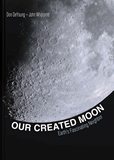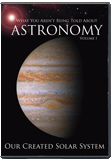
How Old Are Saturn’s Rings?
Originally published in Creation 12, no 4 (September 1990): 40-41.
The rings around Saturn make it one of the most beautiful telescopic objects in the sky. Italian astronomer Galileo admired the planet almost 400 years ago, and wrote of its ‘peculiar appearance’ in 1610.
But it was 1655 before the beautiful ring structure around Saturn was identified—by Dutch astronomer Christian Huygens.
Since then, numerous researchers have added to our understanding of Saturn’s rings. In the 1980s, American space vessels Voyager 1 and 2 took close-up photographs of Saturn. They showed many hundreds of rings around our second-largest planet. The halo of rings is so enormous that 20 planet Earths side by side would still not quite reach the rings' width of more than 255,000 kilometres (160,000 miles).
Many astronomers have been puzzled about how the intricate details of Saturn’s rings could remain in place for billions of years—if indeed the solar system is that old. Even some evolutionist astronomers cannot believe the rings are as old as the ‘evolutionary’ age claimed for the solar system (about five billion years). They admit that the rings cannot be more than 100 million years old, so they propose that they formed from the break-up of a small moon that once circled Saturn.
Astronomer Wing-Huan Ip, from the Max Planck Institute for Astronomy, looked into the conditions necessary for a moon to break up. He says the combined mass of Saturn’s rings would amount to a moon at least 100 kilometres wide (Earth’s moon is 3,473 kilometres wide). Ip says that such a moon could be shattered by a comet only two kilometres across. Yet Ip calculates that such a ring-forming collision would not happen in 30 billion years. This is about twice the age claimed for the universe by most evolutionists.
Laurance R. Doyle (NASA) of Ames Research Center, and colleagues also support a relatively young age for Saturn's rings. They examined 14 images taken by Voyager’s cameras to find the reflectivity of Saturn’s brightest ring. They found that the particles forming the ring are most likely coated with fine, dust-like ice. They say that micro-meteoroids would gradually erode and darken the particle surfaces. Even if the grains began as pure ice they would be blackened after only 100 million years. ‘If the rings have existed… since the origin of the solar system’, they say, ‘they should be much darker than they presently are.’
From these claims, the problems for evolutionists are these:
- Saturn is believed to be billions of years old, but the present condition of its rings means they can't be more than 100 million years old.
- The universe is believed to be about 15 billion years old, but the circumstances which might form Saturn's rings could not possibly happen in this time.
It should be noted that if Saturn has had rings since the solar system was formed, this undermines belief in the long ages proposed by evolutionists.
The evidence is consistent with the creationist belief that Saturn and its rings were created recently.
(This article is based on information in Sky and Telescope, July 1989, pp 10-11.)
Recommended Resources

Answers in Genesis is an apologetics ministry, dedicated to helping Christians defend their faith and proclaim the good news of Jesus Christ.
- Customer Service 800.778.3390
- © 2024 Answers in Genesis




